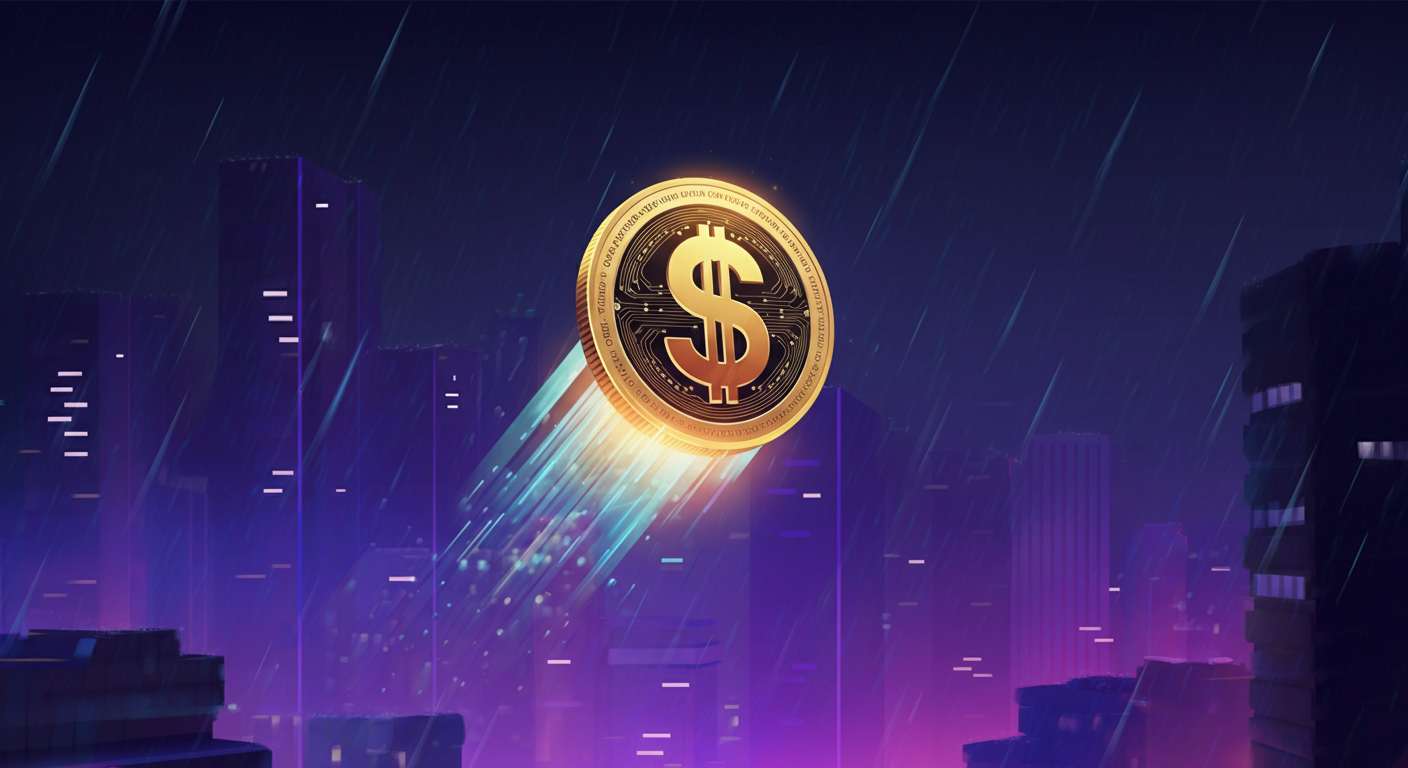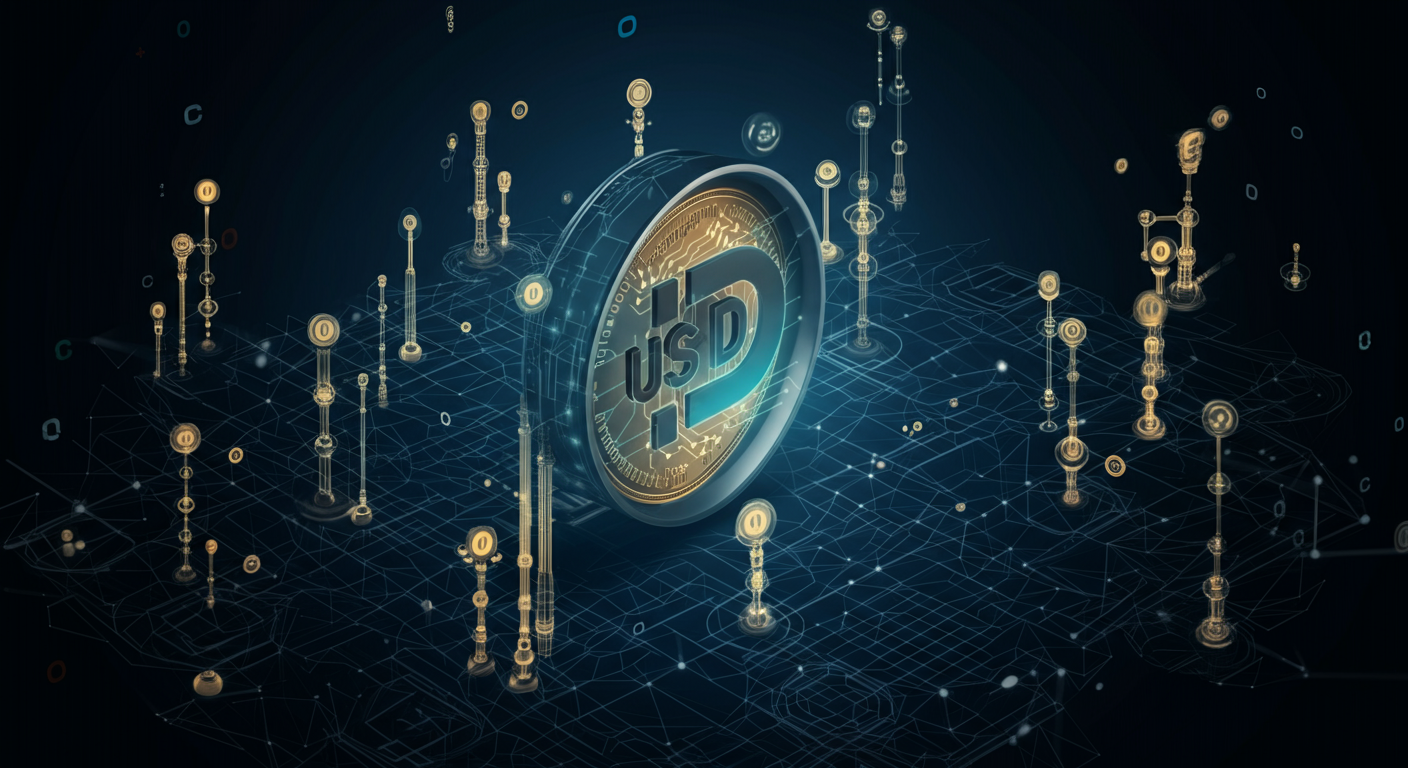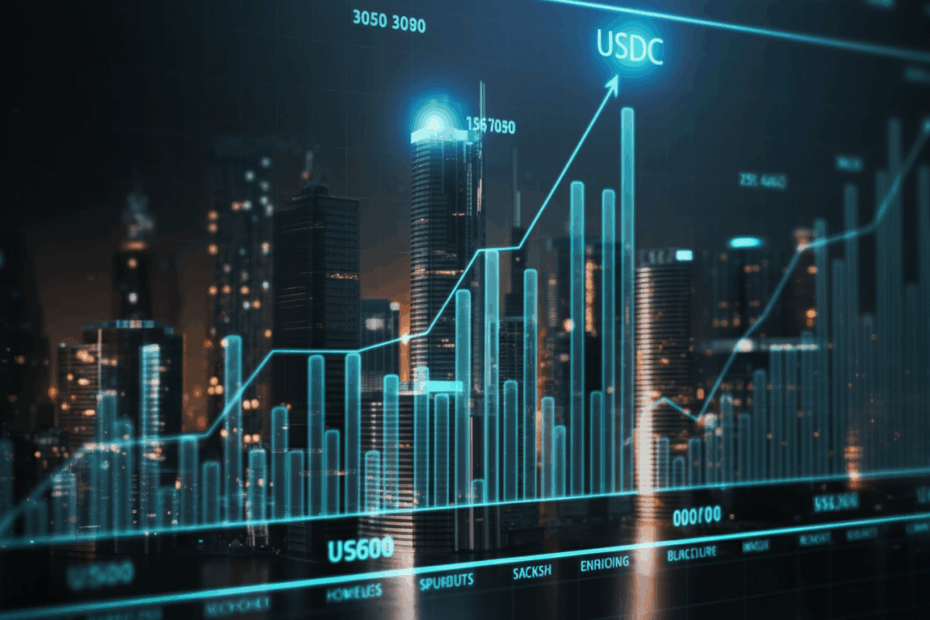Digital dollar de-mystified! Learn about USDC’s tech, uses, and future in our easy guide. Is it the key to bridging crypto & finance?#USDC #Stablecoin #DeFi
🎧 Listen to the Audio
If you’re short on time, check out the key points in this audio version.
📝 Read the Full Text
If you prefer to read at your own pace, here’s the full explanation below.
Basic Info
John: Hey everyone, welcome to our chat about USDC! I’m John, and with me is Lila. Today, we’re diving into USDC, which stands for USD Coin. It’s a type of cryptocurrency known as a stablecoin, designed to hold a steady value of one US dollar. Think of it like a digital dollar that you can use on the blockchain, making transactions fast and borderless.
Lila: That sounds super handy, John! But why is everyone talking about it now? From what I’ve seen on X, there are tons of posts about its expansions and new features.
John: Exactly, Lila. Let’s break it down with some time awareness. In the past, USDC was launched back in 2018 by Circle and the CENTRE consortium, including Coinbase. It started as a way to bring stability to crypto, backed by real US dollars in reserves. This backstory made it a go-to for traders avoiding the wild swings of coins like Bitcoin.
Lila: Oh, like a safe harbor in a stormy sea? Cool! As of now, what’s happening with it?
John: As of now, USDC is thriving with a market cap over $30 billion, according to sources like CoinGecko. It’s integrated into many blockchains, and recent X posts from Circle highlight launches on networks like XRP Ledger and new tools like Circle Gateway for seamless cross-chain access. People are buzzing about its role in everyday payments and DeFi.
Lila: DeFi? That’s decentralized finance, right? Like banking without banks. Looking ahead, do you think it’ll grow even more?
John: Looking ahead, yes! With ongoing expansions to more blockchains and potential regulatory clarity, USDC could become even more central to global finance. Discussions on X suggest integrations with emerging tech like AI-driven wallets.
Lila: Exciting! It’s like USDC is bridging the old money world with the new crypto one.

Core Technology / Features
John: Now, let’s talk about what makes USDC tick technologically. At its core, USDC is built on blockchain technology, primarily Ethereum, but it operates on multiple chains like Polygon, Solana, and more. It’s an ERC-20 token on Ethereum, which means it follows a standard for easy integration into apps and wallets.
Lila: ERC-20? Is that like a recipe that all these tokens follow so they work well together?
John: Spot on, Lila! It’s like a universal plug that lets USDC connect seamlessly. For consensus, it relies on the underlying blockchain’s method—Ethereum uses proof-of-stake now, which is like a voting system where holders ‘stake’ coins to secure the network, more energy-efficient than old proof-of-work.
Lila: That makes sense for the environment. What about scalability? I hear blockchains can get slow.
John: Great question. USDC benefits from layer-2 solutions like those on Polygon for faster, cheaper transactions. A special feature is its full backing by reserves—audited monthly by firms like Grant Thornton, ensuring transparency. Plus, tools like Cross-Chain Transfer Protocol (CCTP) allow moving USDC between chains without bridges, reducing risks.
Lila: Like teleporting your money safely! In the past, how did this tech evolve?
John: In the past, USDC started on Ethereum, facing high fees during busy times. Expansions to other chains like Algorand addressed that.
Lila: As of now, it’s on so many chains, right? Based on X posts, Circle just announced native USDC on XRP Ledger.
John: As of now, yes, with launches on chains like Base, Cosmos, and more, making it accessible everywhere. Features like Circle Gateway, recently live on mainnet, enable unified balances across chains in under 500 milliseconds—super fast!
Lila: Wow, that’s quicker than ordering coffee. Looking ahead, any new tech on the horizon?
John: Looking ahead, Circle is unveiling Arc, a new Layer-1 blockchain built for stablecoins, powered by USDC. This could enhance scalability and introduce native features for enterprise use, as per recent announcements.
Lila: That sounds futuristic! Like building a highway just for digital dollars.
Tokenomics / Supply Model
John: Tokenomics is basically how the token’s economy works. For USDC, it’s straightforward since it’s a stablecoin pegged 1:1 to the USD. Supply isn’t fixed; it’s minted when users deposit dollars and burned when they redeem.
Lila: So, no mining like Bitcoin? It’s more like printing money only when needed?
John: Exactly! No staking or burning for rewards here—it’s all about maintaining that $1 value through reserves.
Lila: In the past, how was it launched?
John: In the past, USDC launched in 2018 with an initial supply based on demand. It grew rapidly, hitting billions in circulation by 2021 amid crypto booms.
Lila: As of now, what’s the supply like?
John: As of now, the circulating supply is around 32 billion USDC, fluctuating with market demand. Real-time charts on CoinGecko show it’s stable at $1, with transparent reserves.
Lila: Looking ahead, any changes planned?
John: Looking ahead, with expansions like Circle Gateway and Arc blockchain, supply could increase as more ecosystems adopt it. No major token burns planned, but efficiency improvements might optimize circulation.
Lila: It’s like a flexible money supply that matches real-world needs.

Use Cases & Ecosystem
John: USDC shines in real-world applications. In DeFi, it’s used for lending, borrowing, and trading on platforms like Aave or Uniswap. For businesses, it’s great for cross-border payments—faster and cheaper than traditional wires.
Lila: Like sending money to family abroad without high fees? What about NFTs?
John: Yes! In NFTs, USDC buys digital art on marketplaces. It’s also infrastructure for remittances and payroll. Notable partnerships include Stripe for payments and Visa for card integrations.
Lila: In the past, what were early uses?
John: In the past, it started with trading and hedging in crypto exchanges.
Lila: As of now, any big integrations?
John: As of now, it’s on 15+ blockchains, with recent additions like XRP Ledger for enterprise payments. X posts mention Mercuryo for on-ramps and spend products.
Lila: Looking ahead, more business adoption?
John: Looking ahead, with Arc blockchain, expect more in stablecoin-powered finance and global trade.
Lila: It’s weaving into everyday life!
Developer Team & Community Engagement
John: The team at Circle, led by CEO Jeremy Allaire, has fintech and crypto expertise. They update frequently, like monthly reserve reports.
Lila: Community-wise, how engaged are they?
John: Very! On X, Circle posts updates, AMAs, and engages with users. Community energy is high, with discussions on expansions.
Lila: In the past, how did the team build up?
John: In the past, started with Circle and Coinbase collaboration.
Lila: As of now, what’s the vibe?
John: As of now, active with recent launches and policy insights.
Lila: Looking ahead, more community events?
John: Looking ahead, expect more through Alliance Program and developer tools.
Lila: Sounds welcoming!
Rewards & Incentives (if applicable)
John: USDC itself doesn’t offer direct staking rewards since it’s a stablecoin. However, users can earn yields by lending USDC in DeFi protocols or through Circle’s partnerships.
Lila: Like putting it in a savings account?
John: Yes! In the past, early yields came from platforms like Compound.
Lila: As of now?
John: As of now, integrations like HyperliquidX offer USDC in liquidity pools.
Lila: Looking ahead?
John: Looking ahead, Arc might introduce new incentive models.
Lila: Nice perks!
Competitor Comparison
- Compared to USDT (Tether), which is the largest stablecoin but has faced transparency issues, and DAI, a decentralized stablecoin backed by crypto collateral.
- USDC stands out with its regulated, audited reserves and multi-chain support.
John: What makes USDC unique is its focus on compliance and trust—monthly attestations build confidence, unlike some competitors’ past opacity.
Lila: Plus, its seamless cross-chain features make it more user-friendly than single-chain options.
John: Absolutely, and its backing by a US-based company like Circle adds regulatory security, setting it apart in a volatile market.
Risk Factors and Challenges
John: Every project has risks. For USDC, regulatory changes could impact operations, like new stablecoin laws.
Lila: What about security?
John: Security issues, like smart contract vulnerabilities on host chains, or centralization risks since Circle controls minting.
Lila: In the past, any incidents?
John: In the past, there was a depeg during the 2023 banking crisis, but it recovered quickly.
Lila: As of now?
John: As of now, it’s stable, but network congestion on chains like Ethereum can cause delays.
Lila: Looking ahead?
John: Looking ahead, sustainability concerns with energy use on some chains, and potential inflation if reserves mismatch.
Lila: Important to stay informed!
Industry Expert Insights
John: From X, Circle’s CEO Jeremy Allaire emphasized building trust with governments for the internet of money, highlighting policy’s role.
Lila: That’s insightful!
John: Analyst posts on X praise USDC’s expansions, like one KOL noting Circle Gateway as a game-changer for cross-chain liquidity.
Lila: Experts see big potential.

X Community Buzz & Roadmap Updates
John: On X, the buzz is electric! Posts from Circle about Circle Gateway launching on mainnet have thousands of views, with users excited about fast cross-chain access.
Lila: Any roadmap highlights?
John: In the past, roadmap focused on multi-chain expansions.
Lila: As of now?
John: As of now, recent updates include USDC on Unichain and alliances like Mercuryo.
Lila: Looking ahead?
John: Looking ahead, Arc blockchain and more integrations, as per X announcements.
Lila: Community is pumped!
FAQ (minimum 6 questions)
What is USDC?
John: USDC is a stablecoin pegged to the US dollar, backed by reserves.
Lila: It’s like digital cash!
How do I get USDC?
John: Buy it on exchanges like Coinbase or through on-ramps.
Lila: Easy as swapping fiat!
Is USDC safe?
John: Yes, with audited reserves, but always use secure wallets.
Lila: Trust but verify!
What’s the difference from USDT?
John: USDC has more transparency and regulation.
Lila: Better for peace of mind!
Can I earn interest on USDC?
John: Through DeFi lending, yes.
Lila: Like a crypto savings!
What’s next for USDC?
John: More chain launches and tools like Arc.
Lila: Exciting growth!
How does USDC handle regulations?
John: Circle works closely with regulators for compliance.
Lila: Smart approach!
Related Links
Final Reflections
John: After exploring USDC together, I can say it’s one of those projects that’s both interesting and approachable for newcomers.
John: It’s great to see how it blends innovation with a friendly, active community. I think it’s worth keeping an eye on!
Lila: Absolutely, John! I learned so much today. I love how blockchain projects like this can be explained without all the confusing jargon.
Lila: I’m looking forward to checking in on USDC in the future to see how it grows!
Disclaimer: This article is for informational purposes only. Please do your own research (DYOR) before making any investment or usage decisions.
